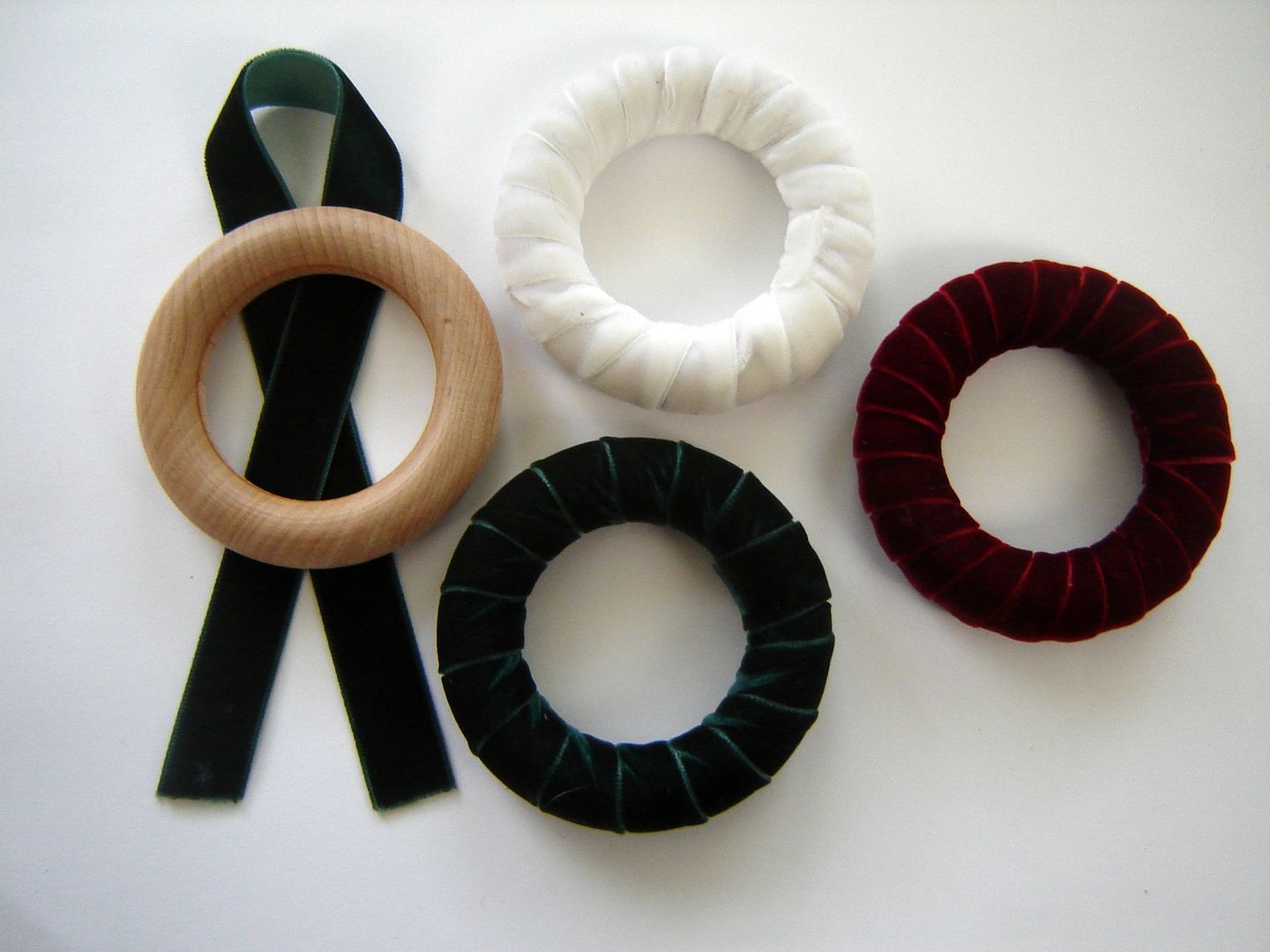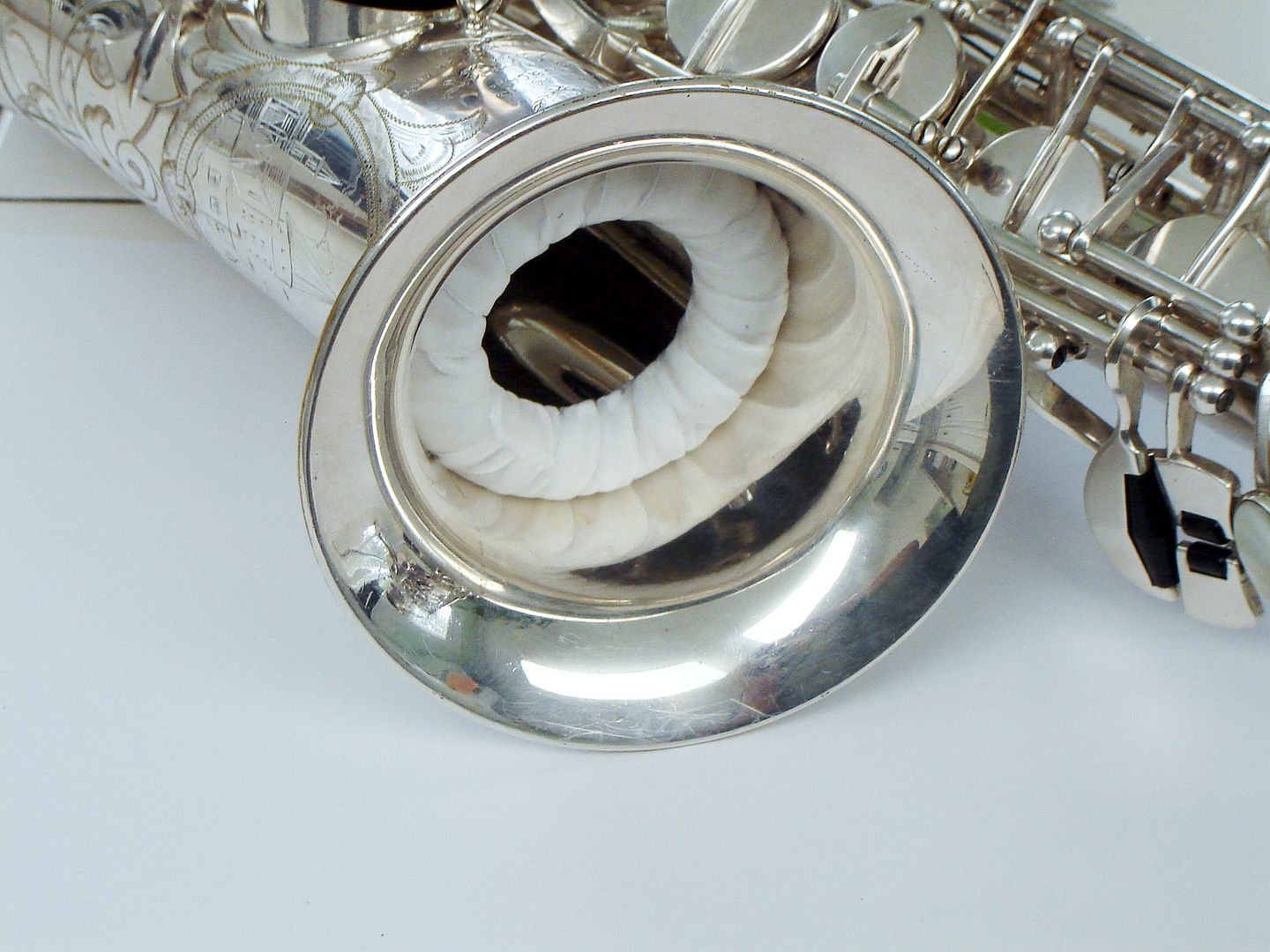The use of a saxophone "mute" was first espoused by Marcel Mule of the Paris Conservatory. He brought that idea to the United States when he did his first concert tour and shared his methodology with American saxophonists and teachers. Larry Teal in "The Art of Saxophone Playing" describes Mule's mute on p.53.
Rather than greatly reduce the volume as is the case with brass mutes, the saxophone "donut mute" cuts out many of the higher overtones (frequencies above "cutoff") that travel directly out the bell of the saxophone giving a more mellow or "darker" quality to the sound.
This type of mute in this instance for an alto sax is quite easy to make. The materials consist of a wooden ring with an outside diameter of 2 3/4" and a strip of velvet ribbon over 40" long that is 5/8" wide, both of which are available on the internet. The ribbon is held in place at the start and the end using thick super glue rather than being sewn. The first photo shows some completed mutes along with the materials used. The second photo shows the mute inside the bell of an alto sax.


"The most satisfactory device, introduced into this country by Marcel Mule consists of a wooden drapery ring wound with velvet ribbon sewed in place."
Rather than greatly reduce the volume as is the case with brass mutes, the saxophone "donut mute" cuts out many of the higher overtones (frequencies above "cutoff") that travel directly out the bell of the saxophone giving a more mellow or "darker" quality to the sound.
This type of mute in this instance for an alto sax is quite easy to make. The materials consist of a wooden ring with an outside diameter of 2 3/4" and a strip of velvet ribbon over 40" long that is 5/8" wide, both of which are available on the internet. The ribbon is held in place at the start and the end using thick super glue rather than being sewn. The first photo shows some completed mutes along with the materials used. The second photo shows the mute inside the bell of an alto sax.





